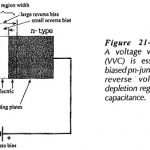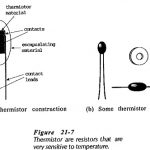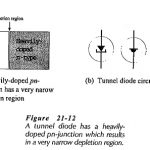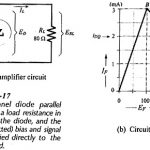Miscellaneous Devices Articles:
Voltage Variable Capacitors: VVC Operation – Voltage Variable Capacitors diodes (VVCs) are also known as varicaps, varactors, and as tuning diodes. Basically, a Voltage Variable Capacitors is a reverse biased diode, and its capacitance is the junction capacitance. Recall that the … (Read More)
Thermistor Operation: The word thermistor is a combination of thermal and resistor. A thermistor is a resistor with definite thermal characteristics. Most thermistors have a negative temperature coefficient (NTC), but positive temperature coefficient (PTC) devices are also available. Thermistor Operation are … (Read More)
Tunnel Diode Operation and Characteristics: Tunnel Diode Operation – A tunnel diode (sometimes called an Esaki diode after its inventor, Leo Esaki) is a two-terminal negative resistance device that can be employed as an amplifier, an oscillator, or a switch. Recall … (Read More)
Tunnel Diode Parallel Amplifier Circuit: For operation as an amplifier, a tunnel diode must be biased to the center of its negative resistance region. Figure 21-17(a) shows the basic circuit of a Tunnel Diode Parallel Amplifier Circuit. Load resistor RL is connected … (Read More)



